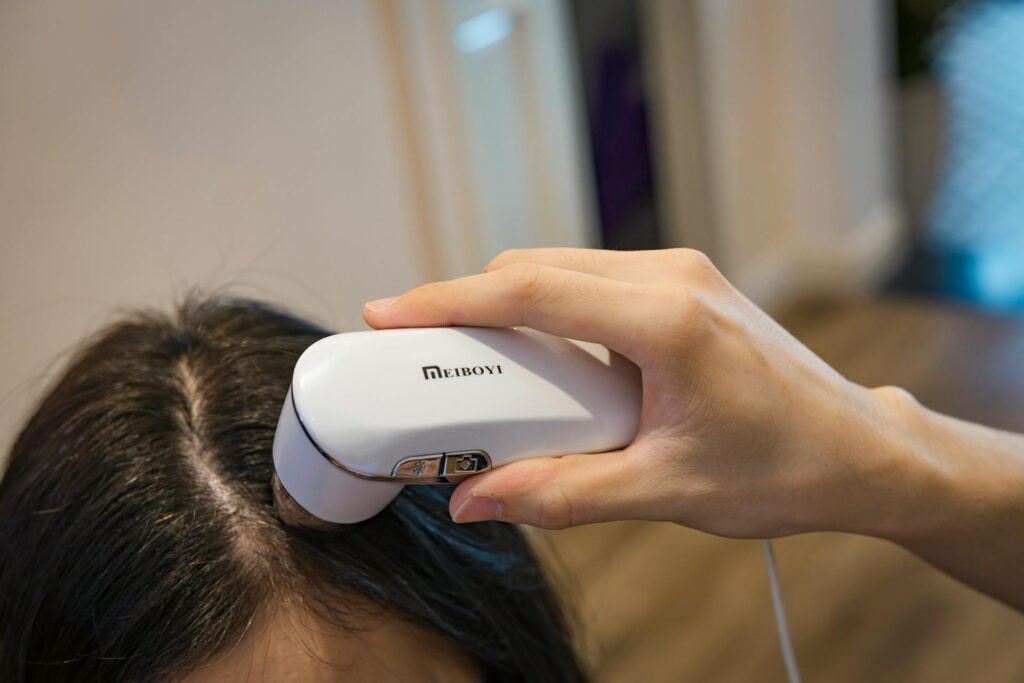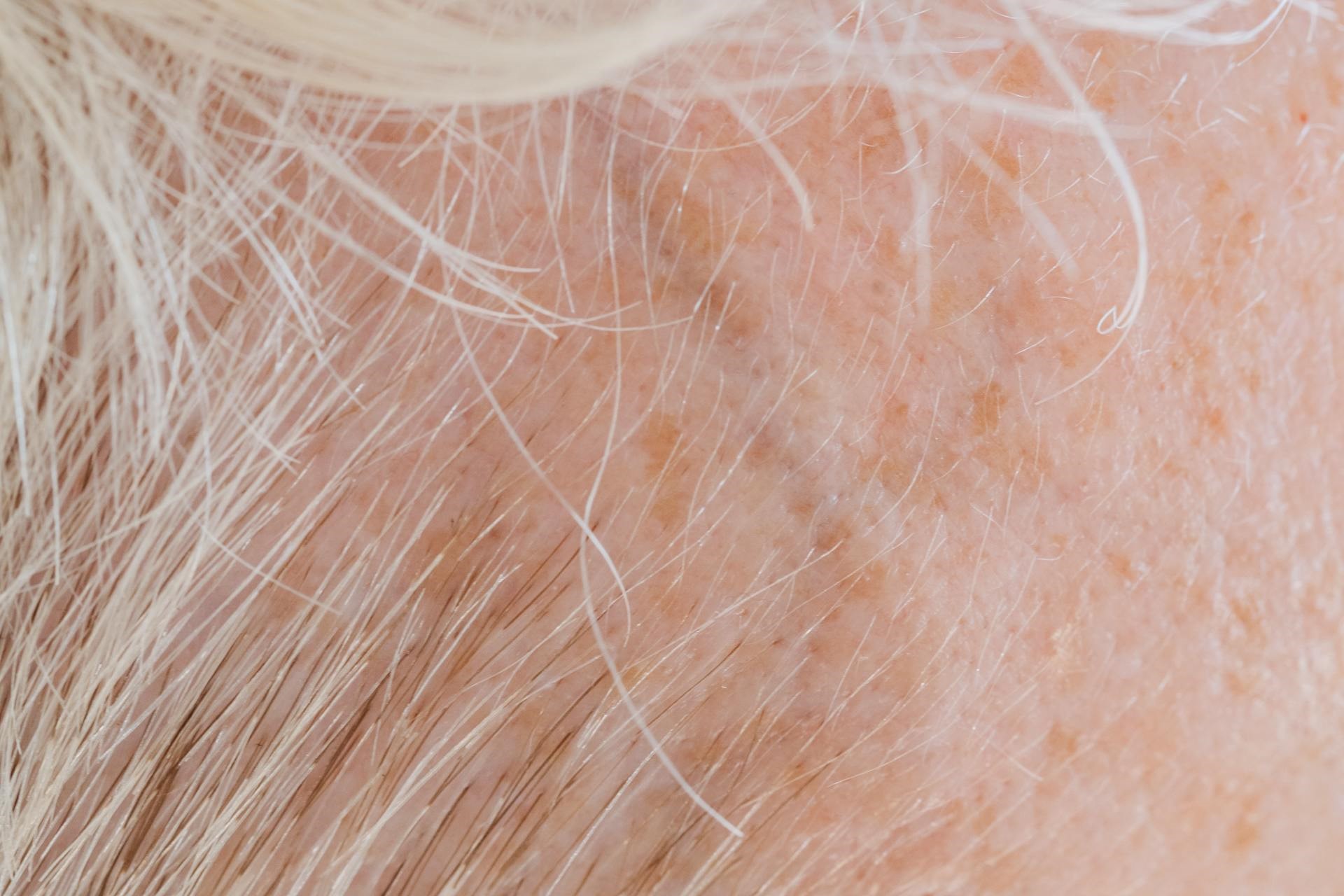
If you are experiencing hair loss, it’s important to know that you are not alone—many individuals are actively seeking solutions to restore both their hair and confidence.
Two widely recognised options for addressing this issue are hair restoration therapy and hair transplants, each offering distinct processes, benefits, and considerations. One key factor to evaluate is the cost of hair restoration, as this can vary significantly depending on the chosen method, the extent of the treatment, and individual goals.
This article will explore hair restoration therapy vs. hair transplants, detailing their differences, costs, recovery times, and identifying who might be the most suitable candidates for each option.
By the conclusion of this discussion, you will have a clearer understanding of which alternative may best align with your needs, preferences, and budget.
What Is Hair Restoration Therapy?

Hair restoration therapy refers to a wide range of both non-surgical and surgical options designed to address hair loss and improve hair density for individuals facing alopecia or thinning hair. This therapy not only aims to restore hair but also seeks to enhance overall hair health through customised treatment plans that cater to each person’s unique needs.
Many patients consult medical professionals to explore the variety of hair restoration techniques available, which include topical treatments as well as advanced therapies like PRP therapy and laser therapy.
Additionally, recognising the psychological impact of hair loss is an essential aspect of the overall healing journey.
What Is a Hair Transplant?
A hair transplant is a surgical procedure that transfers hair follicles from a donor site on the scalp to areas where hair loss or thinning has occurred.
Two common techniques used are Follicular Unit Extraction (FUE), which involves harvesting individual hair follicles, and Follicular Unit Transplantation (FUT), where a strip of scalp is removed to extract hair grafts.
This innovative method aims to deliver natural-looking results by redistributing healthy hair follicles, helping to restore hair density and enhance the overall aesthetic for patients.
Thanks to advancements in hair restoration technologies, hair transplants have become a popular and effective long-term solution for individuals looking to address hair loss.
What Are the Differences Between Hair Restoration Therapy and Hair Transplants?
Understanding the differences between hair restoration therapy and hair transplants is crucial for anyone looking to address hair loss.
Hair restoration therapy includes various non-surgical treatments, such as scalp treatments, medications like minoxidil and finasteride, and even DIY hair loss treatments that some individuals explore as a more accessible or cost-effective option. In contrast, hair transplants involve a more invasive surgical procedure aimed at delivering permanent results.
When considering their options, patients need to evaluate the effectiveness, recovery time, and costs associated with each method, along with their personal needs and long-term goals.
Ultimately, making an informed decision should involve medical consultations and a comprehensive understanding of the treatment plans available, recognising that professional advice often yields better outcomes than relying solely on DIY hair loss treatments.
1. Treatment Process
The treatment process for hair restoration and hair transplants varies significantly depending on the chosen method and individual objectives. For hair restoration, options such as PRP therapy and laser therapy typically involve multiple sessions aimed at stimulating hair regrowth without the need for surgery.
In contrast, hair transplant procedures require a comprehensive consultation process to evaluate donor hair quality and to create a personalised treatment plan. Patients are educated on what to expect at each stage, from pre-operative assessments to post-operative care, to ensure a seamless experience and optimal results.
It is essential for patients to understand the unique characteristics of each method to make informed decisions. During the initial consultation, a detailed examination—including an assessment of scalp condition and family history—enables the medical team to direct individuals towards the most suitable solutions tailored to their specific needs.
Both treatment options prioritise patient engagement, encouraging individuals to ask questions and clarify any uncertainties. This approach ensures that patients are fully aware of the expected outcomes and timelines.
Following the procedure, ongoing support is crucial for enhancing treatment efficacy and promoting adherence to aftercare protocols, ultimately leading to successful and satisfying results.
2. Cost
Cost is an important consideration when choosing between hair restoration therapy and hair transplants. Each option comes with its own price tag, which can vary depending on the techniques employed and the extent of hair loss.
Generally, non-surgical options tend to have lower upfront costs compared to surgical ones. Surgical methods, such as FUE or DHI, may necessitate a larger financial investment due to their complexity. Being aware of the cost differences between these approaches allows patients to make informed decisions that fit their budget and desired outcomes, ultimately enhancing their satisfaction with the procedure.
Another significant factor affecting costs is the reputation of the clinic and the expertise of the surgeon. Well-established clinics with high patient satisfaction rates often charge a premium for their services. Geographic location also plays a critical role; prices can vary considerably between urban centres and smaller towns, influenced by demand and operational costs.
Patients should explore various financing options available to alleviate the financial strain of these procedures. By doing so, they can ensure that long-term value and affordability align with their individual financial plans and expectations.
3. Recovery Time
Recovery time is a crucial factor to consider when evaluating hair restoration therapies versus hair transplants, as the duration and processes can differ significantly. Non-surgical options typically require less recovery time, allowing patients to quickly return to their normal activities.
In contrast, surgical hair transplants often involve a longer recovery period, which necessitates careful post-operative care and adherence to recovery protocols to ensure optimal hair growth and minimise potential side effects. Understanding these aspects is essential for setting realistic expectations for patients.
Typical recovery timelines for hair restoration therapies can range from a few days to a couple of weeks, depending on the technique used, such as PRP (Platelet-Rich Plasma) injections or laser therapy. These methods usually result in minimal discomfort and swelling, enabling individuals to resume their daily routines almost immediately.
On the other hand, hair transplant procedures may require several weeks for initial healing, with complete results taking up to a year to fully manifest.
Post-operative care is vital; following the surgeon’s guidelines regarding scalp cleaning and avoiding strenuous activities is crucial in preventing complications. Additionally, lifestyle modifications—such as maintaining a healthy diet and managing stress—can further support hair recovery. This underscores the importance of a holistic approach during this transformative journey.
4. Success Rate
The success rates of hair restoration methods can vary significantly between non-surgical therapies and surgical hair transplants, making it a crucial factor for individuals seeking effective solutions for hair loss.
Typically, hair transplant procedures tend to have high success rates, with many patients noticing significant hair regrowth within just a few months. Clinical studies consistently indicate that patients who choose hair transplants report high levels of satisfaction, whereas non-surgical options may exhibit varying effectiveness depending on individual conditions and adherence to treatment protocols.
While surgical methods generally produce more predictable long-term results, non-surgical treatments like PRP (platelet-rich plasma) therapy and topical formulations can be valuable adjuncts or preventive measures for those who are not yet ready to undergo surgery.
It is important to understand that individual responses to these therapies can differ, influenced by various factors such as genetic predisposition and hormonal changes. Patients often demonstrate diverse levels of satisfaction based on their expectations and the visible outcomes of their chosen methods, underscoring the importance of personalised treatment plans to achieve optimal results.
Who Is a Good Candidate for Hair Restoration Therapy?

Determining a suitable candidate for hair restoration therapy involves evaluating several factors, such as the degree of hair loss, the underlying cause of alopecia, and the individual’s overall health and lifestyle.
Those who may benefit from non-surgical options can include individuals experiencing early stages of hair thinning as well as those with specific lifestyle requirements.
The effectiveness of hair restoration treatments can differ from person to person, which underscores the need for personalised treatment plans created through comprehensive medical consultations. Understanding individual needs and expectations is essential for achieving satisfactory results.
Who Is a Good Candidate for a Hair Transplant?
Identifying a suitable candidate for a hair transplant involves careful consideration of several factors, including the availability of donor hair, the extent of hair loss, and the individual’s overall health.
Typically, candidates are those who have stable hair loss patterns and sufficient donor hair available for the transplant. It is crucial to conduct a thorough pre-operative assessment to determine whether a patient is a good fit for surgical options and to establish realistic expectations regarding the potential outcomes of the procedure.
Additionally, evaluating the psychological impact of hair loss is important, as it helps ensure that patients are mentally prepared for the journey ahead.
What Are the Benefits of Hair Restoration Therapy?
Hair restoration therapy offers numerous benefits for individuals facing hair loss, making it an appealing option for those seeking to improve their hair health and overall appearance. The science of hair restoration has advanced significantly, introducing non-surgical alternatives like PRP therapy and laser therapy that effectively stimulate hair growth with minimal downtime and reduced risks compared to surgical interventions.
These therapies can be customised to address individual needs and goals, often resulting in noticeable improvements in hair density and quality. Understanding the advantages of these treatments, driven by the latest innovations in the science of hair restoration, is essential for making informed decisions about hair loss solutions.
What Are the Benefits of a Hair Transplant?
The advantages of a hair transplant go beyond merely restoring hair; they provide long-term results that can greatly enhance a patient’s confidence and self-esteem.
Surgical methods, such as Follicular Unit Extraction (FUE), deliver natural-looking outcomes by redistributing healthy hair follicles that blend seamlessly with the existing hair. Many patients express high levels of satisfaction after the procedure, noting that they enjoy fuller hair and a more youthful appearance.
It is important for individuals contemplating surgical options for hair restoration to understand the lasting effects of hair transplants.
What Are the Risks and Side Effects of Hair Restoration Therapy?
Hair restoration therapy can offer significant benefits, but it is important to be aware of the potential risks and side effects that come with these non-surgical options.
Treatments such as PRP therapy and laser therapy may result in temporary side effects, including redness, swelling, or discomfort at the treatment site.
Understanding these risks is essential for creating a comprehensive treatment plan that aligns with each patient’s unique needs and expectations. By being informed about the possible downsides, patients can make better decisions and ultimately enhance their overall experience.
What Are the Risks and Side Effects of a Hair Transplant?
Hair transplants are generally regarded as safe and effective; however, it is important for patients to understand that there are certain risks and potential side effects associated with the procedure.
Common surgical risks include infection, scarring, and the possibility of achieving unnatural-looking results if the hairline design is not handled with care.
Post-operative care plays a crucial role in minimising complications and promoting successful hair regrowth. By being aware of these risks, patients can better prepare themselves both mentally and physically for the process, which can ultimately lead to improved outcomes and greater satisfaction.
How Can You Decide Which Option Is Right for You?

Choosing between hair restoration therapy and hair transplants can be a nuanced decision that requires thoughtful consideration of individual preferences, budget constraints, and the extent of hair loss.
Important factors to take into account include treatment objectives, recovery time, and the overall effectiveness of each option.
A comprehensive consultation with a hair specialist can offer valuable insights, helping individuals identify the most appropriate choice for their unique situation and ensuring that the selected treatment meets their needs and expectations.
1. Consultation with a Doctor
A consultation with a doctor is an essential first step in determining whether to pursue hair restoration therapy or hair transplants. This meeting provides patients with crucial information about their options.
During the consultation, hair specialists evaluate the extent of hair loss, discuss potential treatment plans, and educate patients on the advantages and disadvantages of each method. This personalised approach ensures that patients are well-informed and that their expectations align with realistic outcomes.
Patients can anticipate a comprehensive assessment of their individual needs during these appointments. Specialists will consider factors such as hair type, density, and the overall health of the scalp. Open communication is encouraged, allowing individuals to voice their concerns and desired outcomes.
By collecting detailed information, hair specialists can develop customised treatment plans that cater to each patient’s unique circumstances, thereby optimising the likelihood of successful hair restoration.
This collaborative process not only fosters a better understanding but also builds trust, give the power toing patients to make informed decisions about their hair restoration journey.
2. Personal Preferences
Personal preferences play a crucial role in the decision-making process for individuals contemplating hair restoration therapy or hair transplants. These choices can significantly affect lifestyle and daily routines.
Factors such as desired outcomes, recovery time, and comfort with surgical procedures can greatly influence which option feels most appropriate. It is essential for patients to take the time to reflect on their expectations, ensuring that the selected treatment aligns with their lifestyle and long-term goals.
Understanding how these personal preferences relate to individual circumstances is vital, as what is effective for one person may not be suitable for another. For example, some individuals may prioritise a non-invasive approach due to a busy schedule that doesn’t allow for extensive downtime, while others might prefer the more permanent results offered by a transplant, even if it requires a commitment to recovery.
Evaluating these options through the lens of patient satisfaction can lead to more informed decisions. Ultimately, individuals should engage in comprehensive research and have discussions with professionals to clarify their priorities, allowing them to make choices that resonate with both their immediate needs and future aspirations.
3. Budget
Budget plays a significant role for many individuals when weighing the options between hair restoration therapy and hair transplants, as the costs associated with each can differ greatly. It’s important for patients to assess their financial situation and consider various financing options to find a treatment that not only fits their budget but also delivers satisfactory results.
Recognising the long-term value of hair restoration services can help support the decision to invest in restoring hair density and boosting overall confidence.
When evaluating budget considerations, one should take into account not just the initial costs but also any potential long-term expenses that may arise from follow-up treatments or products designed to maintain results. Financing options, such as medical payment plans or health savings accounts, can offer flexible solutions that alleviate some of the financial strain, making hair restoration more attainable.
Additionally, comparing prices among different clinics and looking into patient satisfaction ratings can help uncover the best value for the services provided. Ultimately, making informed financial decisions allows individuals to choose an option that aligns with both their aesthetic aspirations and financial situation.
4. Hair Loss Severity
The severity of hair loss plays a crucial role in determining the most appropriate treatment options, as it affects both hair restoration therapies and the suitability for hair transplants. Individuals experiencing early-stage hair thinning may find non-surgical options beneficial, while those with advanced hair loss might find surgical interventions to be more effective in achieving their desired outcomes.
Comprehensive assessments during consultations are essential to tailor treatment plans to each patient’s specific needs and conditions.
For instance, patients in the initial stages of hair loss often respond positively to topical treatments and oral medications, which can help promote hair density over time. As the condition advances and bald patches become more noticeable, a hair transplant may become a more viable surgical option that provides lasting coverage.
It is important for individuals to discuss their unique situations with specialists, who will evaluate hair loss patterns, scalp health, and overall expectations. This thorough evaluation not only enhances the effectiveness of the chosen treatments but also give the power tos patients to make informed decisions about their hair restoration journey.
Frequently Asked Questions
1. What is the difference between hair restoration therapy vs hair transplants?
Hair restoration therapy is a non-surgical treatment that aims to stimulate hair growth and improve overall hair health. On the other hand, hair transplants involve surgically transplanting hair follicles from one area of the scalp to another to address hair loss.
2. Which option is more suitable for me?
The best option for you will depend on the cause and extent of your hair loss, as well as your personal preferences and budget. It is recommended to consult with a hair restoration specialist to determine the most suitable treatment for your specific needs.
3. How does hair restoration therapy work?
Hair restoration therapy uses various techniques such as laser therapy, PRP injections, and topical solutions to stimulate hair growth and improve hair quality. These treatments work by increasing blood flow to the scalp, nourishing hair follicles, and promoting cell growth.
4. Can hair restoration therapy regrow all of my lost hair?
Unfortunately, no. Hair restoration therapy can help to regrow some of the hair you have lost and prevent further hair loss, but it cannot fully reverse baldness. Hair transplants, on the other hand, can provide a more significant and permanent solution for those with advanced hair loss.
5. How long do the results of hair restoration therapy last?
The results of hair restoration therapy can vary depending on the individual and the type of treatment used. Some patients may see results lasting for several months, while others may require ongoing treatments to maintain their results. Regular maintenance sessions may be recommended to achieve long-term benefits.
6. Are there any risks or side effects associated with these treatments?
Hair restoration therapy is generally considered safe with minimal risks or side effects. Some patients may experience mild discomfort or redness at the treatment site, but these usually subside quickly. Hair transplants, on the other hand, are a surgical procedure and carry a slightly higher risk of infection or scarring. It is essential to discuss the potential risks and side effects with your hair restoration specialist before undergoing any treatment.





